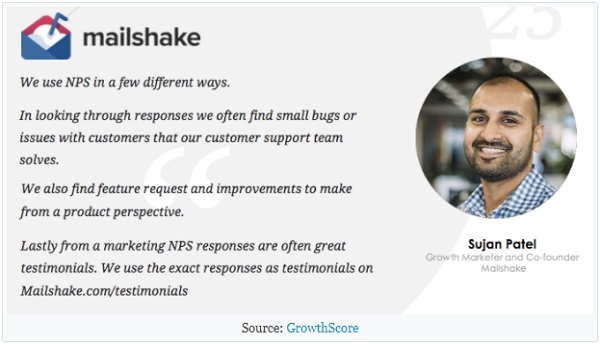Product marketing and management mistakes that companies can avoid
Published on November 30, 2017 – 7-minute reading
Article in English
Source: here
Whether you’re on the marketing side or the management side, I bet you’ll agree that every product has a unique story to tell. There are numerous ups and downs when it comes to positioning the messaging, building the overall go-to strategy, setting up demand and adoption, and helping sales teams sell and close more deals.
Clearly, product marketing and management are hard, and there are numerous touch-points where a company can go wrong. If you evaluate it objectively, most of these mistakes are, well … easily avoidable. We’ve listed a few areas that need attention from the very start. They are crucial to address and can’t be avoided.
1. Not updating an MVP (Minimum Viable Product) soon enough
Eric Ries, the brainchild behind the Lean Startup methodology, puts a lot of emphasis on building a Minimum Viable Product (MVP) and developing the product based on validated learning and getting customer feedback quickly and often. This methodology eliminates uncertainty in the product development process and has transformed the way products are developed.
HootSuite, Buffer, and Unsplash are examples of products that stuck to this lean methodology and thus were able to achieve faster product adoption and growth.
Steve Blank, a Silicon Valley serial entrepreneur, states: « The founders of Lean Startups don’t begin with a business plan; they begin with the search for a business model. Only after quick rounds of experimentation and feedback reveal a model that works do lean founders focus on execution ».
While seeking feedback and practicing validation-based learning is a great idea, to begin with, many companies stick with the approach and delay moving forward-impacting based decisions. A continued minimalistic approach may soon make the user jump to another product due to lack of timely innovation and a clear understanding of what they really expect from your product.

Alex Turnbull shares his insights on MVP (Minimum Viable Product) in this thoughtful post: Over the next few months, the feedback we were getting was clear: While the design was awesome, the product was more than users needed, and it was getting more complicated each time we enhanced it. We had disproved our initial hypothesis about the features we thought users wanted and learned what our users actually wanted: simple ticketing and knowledge base software. So armed with that data, we stripped down the product to its core and simplified the user experience. That simplification was a major turning point for us.
2. Not building a faster product prioritization plan
Most early-stage start-ups don’t really need a product manager; in the initial days, it’s the CEO (Chief Executive Officer) who wears that hat. However, because product marketing is complex and cross-functional, it’s advisable that companies invest time in building a product prioritization plan as soon as the teams start to see signs of growth.
For smaller companies, it is easy to get sales, marketing, product, and customer-facing teams together for a quick huddle about the product’s life-cycle, but with continuous growth, not every team will have the time. This impacts the product roadmap and future releases as well as disturbs the flow for internal stakeholders.
A situation like the one mentioned above usually crops up when teams are too close to their product or their roadmap is too complicated for them to clearly identify the roadblocks. That’s why they need to look externally to fully understand the market they want to target and the competition in that space.
3. Ignoring design
We are way past the time when a « well-designed » product was considered a novelty. Today design is central to deeply engaging user experiences and ignoring it is a rookie mistake.
Facebook is a great example of a brand that adopted a design-based philosophy from the very start and continues to do so. For example, introducing the « Like » button, photo tagging, and other design-oriented features.
Soleio Cuervo, one of the first designers and the creator of the ‘Like’ button, shares his experiences in a post on First Round: « When people can build an identity with your product over time, they form a natural loyalty to it ».
The same philosophy is adopted by the team at Pocket. Nikki Will, Head of Design at the company, shares: « Design is at the core of the company – it’s always been one of the most important parts of how we frame each part of the business, and we approach problems from a design mentality. Everyone here is user-focused and has a strong understanding of design thinking. There’s lots of collaboration, too. Though we have an informal design process, we stress the importance of going wide in design explorations, learning quickly, and iterating ».
She adds: « Our design solutions should solve real user needs. It’s great to understand what users suggest and what features they’d like, but we make sure we understand the root problem users are experiencing. For example, users have asked for the ability to have folders as a feature inside Pocket. But when we looked into that, we found that they actually just wanted a place to put their videos. So we created a feature that sorts videos automatically for them ».
By building a product that’s designed in a way that it truly solves a problem, companies can not only build a loyal audience but can also significantly impact a user’s life.
4. Investing in vanity features
Features are the bread and butter of a product. Simply put, the right features can make or break a product. Unfortunately, most companies make the mistake of investing their time and energy in building features that are vanity and do not serve any purpose.
The simplest criteria for any company when building features should be the uniqueness of the features and how efficient they are in enabling users to achieve their business objectives and goals. Companies should also compare the business value to development time and compare releasing more new versions with fewer features v. releasing fewer new versions but with better features.
« The best features you should be building are features that people are willing to directly pay money for, or are features that enable you to reach a whole new market. Otherwise, they’re just nice to haves », Clifford Oravec.
5. Laying low emphasis on data
It’s quite common for companies to underestimate the true power of data. As a Marketer, I’ve seen this happen quite often in early-stage start-ups. A data-driven product growth plan is one that excels each time. That’s because it helps companies to keep a tab on what’s working and what’s not – every time.
A lot of companies ignore data as mere numbers. However, if we dig deeper, data speaks a ton about a user’s needs, attitude, and interests. Good companies understand that data allows them to peep into complex human behavior, which in turn helps them build better products – a crucial vantage point.
Amanda Richardson, Chief Data & Technology Officer at HotelTonight, believes that there are « A number of trends and approaches to data that aren’t just lazy, but also ineffective, misleading, and costing companies a ton of opportunity ».
So, what can companies do?
Here’s a quick plan of action:
- Build a hypothesis and analyze data in line to it. Remove the fluff and dig deeper on how a data set impacts what you intended to achieve.
- Set a clear definable metric for your goals.
- Look at the data, identify the problem and then build strategies. Don’t shoot in the dark.
- Build a concrete process around data.
- Periodically prune data streams that are no longer relevant. As Amanda summates: « Otherwise, someone pulls the wrong data, and you end up with seven different definitions of revenue».
6. Not seeking enough feedback
It’s hard to believe product success without customer feedback. You can’t continue to better your product without knowing what your users actually need. Fortunately, users don’t shy away from sharing their feedback with companies and go all out in displaying their displeasure through emails, on forums, and on social media.
Clearly, it’s hard to ignore feedback.
Quality feedback is a necessity and should be requested before your customer decides to throw it at you. If you don’t do that it’s an opportunity lost. An unhappy customer is less likely to share quality feedback with you. That’s why you need to be proactive in seeking it from them.
If you are an early-stage start-up, get on the phone with them. Understand what you can do better to improve your product and its features. Write to them, send them customer satisfaction forms.
For growing companies, there’s nothing better than a Net Promoter Score (NPS) survey. It helps you to peep into the « real value » that your product provides to its users. A better score is a good reflector of your product.
Shan-Lyn Ma, Zola’s CEO (Chief Executive Officer), and founder talks about how they use NPS (Net Promoter Score): « It’s tempting to listen to all the good stuff you get in your NPS (Net Promoter Score) surveys, but we know we’ve learned a lot more by being very focused on the not-so-good comments. We want to really understand the reasons certain couples aren’t promoters ».
Running NPS (Net Promoter Score) surveys can not only help companies get better insights about what users truly feel about your product, but also provide fodder for product changes and enhancements.

Wrapping it up!
Building a product that your users will love is a tough task to achieve. By addressing the above-mentioned issues right at the start, you can save a ton of time which now can be used in building a quality product.
Look through the problem, find solutions and get going.
Author of the article
Taru Bhargava
Content Marketing Manager, Lawpath, B2B SaaS | Australia
Related services – Executive Programs and Training
- Product Development and Management – How to develop the successful product: From dream to reality.
- MODULE 03 – Planning & Roadmap: How to communicate a high-level vision of your product and service offering.
- MODULE 04 – Market & Competition: How to identify trends, innovation potential, risks and opportunities.
- MODULE 06 – Development & Product Marketing: How to create new goods and services for success in a fast-changing world.
- MODULE 07 – Financing & Investment: How to ensure your investment addresses market opportunities and customer needs.
- MODULE 09 – Training & Support: How to align your employees and partners for successful launch.
Categories
Tags
Product Manager
Subscribe to our blog
Do you want to better understand the world around you and adapt to its constant changes?
Would you like experts to inform, explain and decipher the latest news and best practices in innovation, agile leadership, product and service development, digitalization, and its transformation?
Fields with an asterisk (*) are mandatory.

COVID-19
© 2016-2021 AlpRocket – All right reserved

